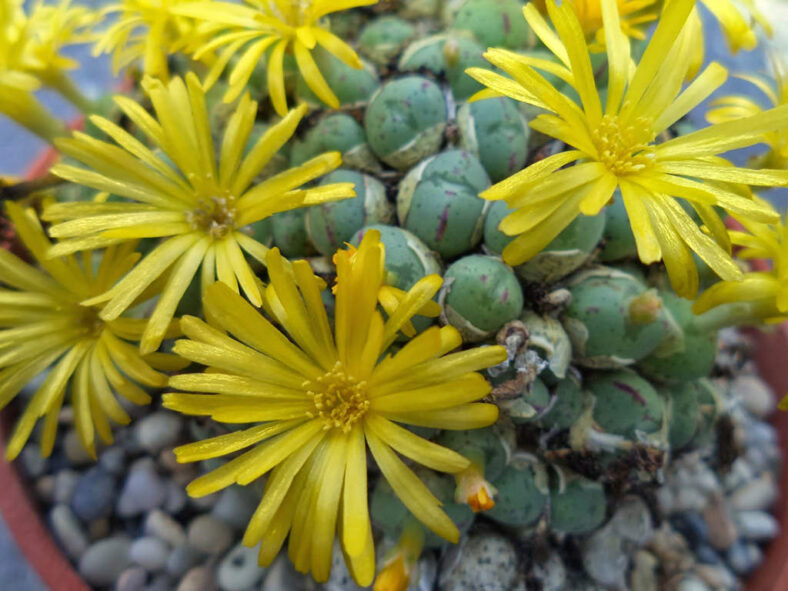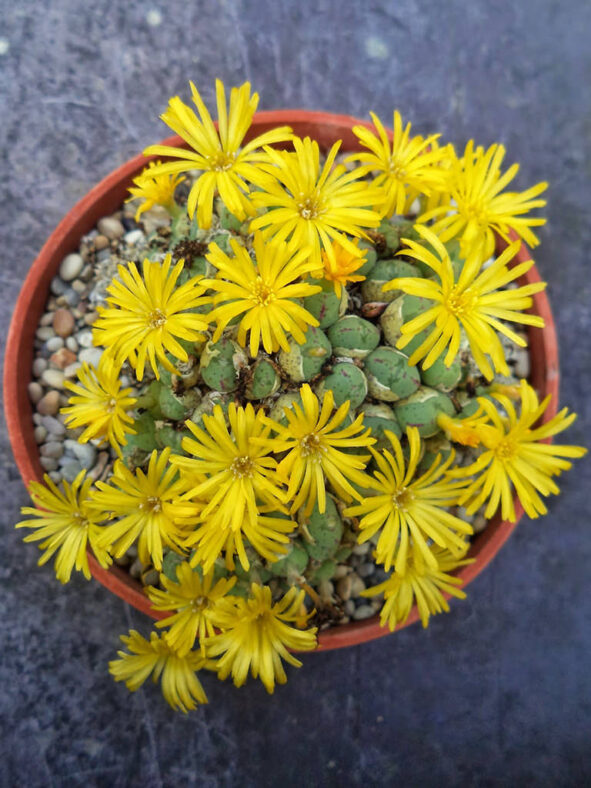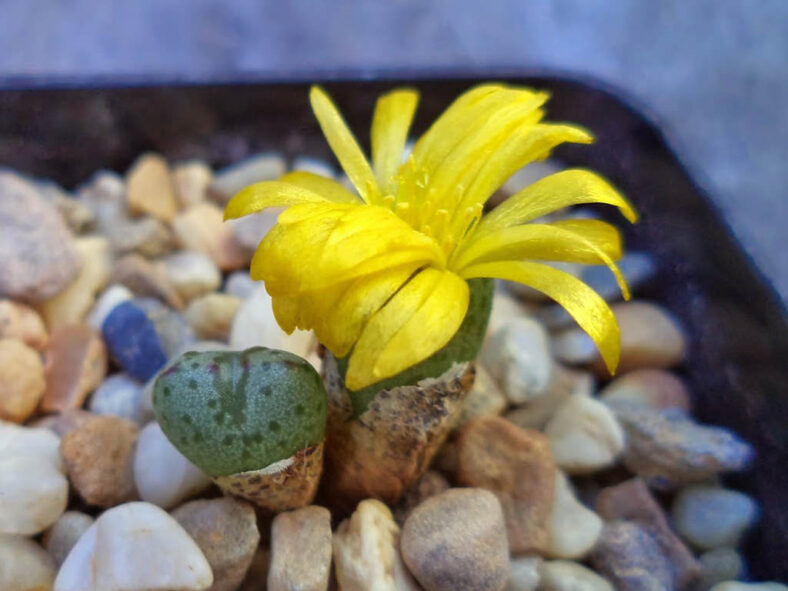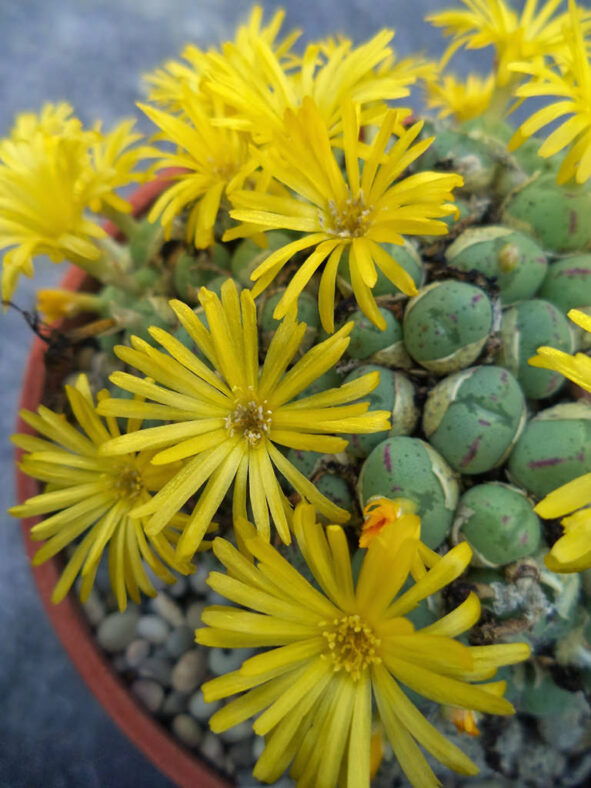Conophytum longibracteatum is a rare species endemic to a small area in the Northern Cape province of South Africa. It has a very restricted geographic range and is found in only one specific location.
Scientific Name
Conophytum longibracteatum L.Bolus
Scientific Classification
Family: Aizoaceae
Subfamily: Ruschioideae
Tribe: Ruschieae
Genus: Conophytum
Etymology
The specific epithet "longibracteatum" (pronounced "lon-jee-brak-tee-AY-tum") means "having long bracts."
Origin
Conophytum longibracteatum is native to South Africa. It grows on quartzite ridges in Komaggas, Northern Cape, at elevations ranging from 985 to 2,560 feet (300 to 780 m).
Description
Conophytum longibracteatum is a dwarf succulent that forms dense clumps of heart-shaped bodies consisting of two thick, almost entirely fused leaves. The clumps can reach a diameter of 4 inches (10 cm). The bodies are smooth, shiny, and bluish-green, adorned with intricate green or red lines. They are typically shortly bilobed, mildly keeled, and can grow to a height of 0.6 inches (1.5 cm) and a diameter of 0.4 inches (1 cm).
In the fall, Conophytum longibracteatum produces large flowers with yellow petals, which open during the daytime.

How to Grow and Care for Conophytum longibracteatum
Light: This plant thrives in bright light but should be protected from intensive direct sunlight. To avoid sunburn, place it in an area where it can receive a few hours of full sun during the cooler parts of the day.
Soil: For optimum growth, Conophytum longibracteatum requires porous soil that allows water to drain away quickly. You can use a commercial potting mix designed for succulents or make your own.
Temperature: This plant can tolerate high temperatures but is not frost-hardy. It grows best in USDA Plant Hardiness Zones 10b to 11b, with average minimum winter temperatures ranging from 35°F to 50°F (1.7°C to 10°C).
Watering: Conophytum longibracteatum requires little to no water during its dormancy from spring to summer. When it begins to grow again in the fall, it is safe to water it deeply. However, ensure that the soil dries out between waterings. If the leaves begin to wrinkle during the active growth, it may indicate that the plant needs additional water.
Fertilizing: This plant is a light feeder and does not need fertilizer if repotted every two years.
Repotting: The best time to repot this plant is at the beginning of the growing season, but it can also be done at any point during active growth.
Propagation: Conophytum longibracteatum is usually propagated from seeds, but can be easily propagated by division. The ideal time to divide the plant is before it starts to break dormancy or after flowering.
Learn more at How to Grow and Care for Conophytum.
Toxicity of Conophytum longibracteatum
Conophytum longibracteatum is considered non-toxic, so growing around children and pets is safe.
Links
- Back to genus Conophytum
- Succupedia: Browse succulents by Scientific Name, Common Name, Genus, Family, USDA Hardiness Zone, Origin, or cacti by Genus
Photo Gallery
Click on a photo to see a larger version.


